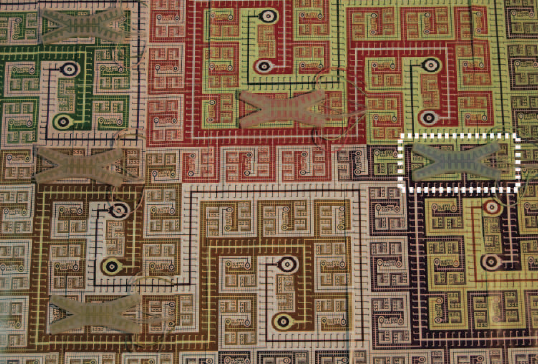Inspired by nature, soft robots can camouflage themselves or change color
August 17, 2012
Last year, a team of Harvard University researchers led by George Whitesides, the Woodford L. and Ann A. Flowers University Professor, broke new engineering ground when they developed soft, silicone-based robots inspired by creatures like starfish and squid.
Now they’ve developed a system — again, inspired by nature — that allows the soft robots to either camouflage themselves against a background or make bold color displays, like a chameleon.
Such a “dynamic coloration” system could one day have a host of uses, ranging from helping doctors plan complex surgeries to acting as a visual marker to help search crews following a disaster, said Stephen Morin, a postdoctoral fellow in the Department of Chemistry and Chemical Biology and first author of the paper.
“When we began working on soft robots, we were inspired by soft organisms, including octopi and squid,” Morin said. “One of the fascinating characteristics of these animals is their ability to control their appearance, and that inspired us to take this idea further and explore dynamic coloration. I think the important thing we’ve shown in this paper is that even when using simple systems — in this case we have simple, open-ended micro-channels — you can achieve a great deal in terms of your ability to camouflage an object, or to display where an object is.”
“One of the most interesting questions in science is, ‘Why do animals have the shape and color and capabilities that they do?’ ” said Whitesides. “Evolution might lead to a particular form, but why? One function of our work on robotics is to give us, and others interested in this kind of question, systems that we can use to test ideas. Here the question might be: ‘How does a small crawling organism most efficiently disguise (or advertise) itself in leaves?’ These robots are test-beds for ideas about form and color and movement.”
How to do it
Just as with the soft robots, the “color layers” used in the camouflage start as molds created using 3-D printers. Silicone is then poured into the molds to create micro-channels, which are topped with another layer of silicone. The layers can be created as a separate sheet that sits atop the soft robots, or incorporated directly into their structure. Once created, researchers can pump colored liquids into the channels, causing the robot to mimic the colors and patterns of its environment.
By pumping heated or cooled liquids into the channels, researchers can also camouflage the robots thermally (infrared color) or use fluorescent liquids to allow the color layers to glow in the dark.
The simple microfluidic networks can change the color, contrast, pattern, apparent shape, luminescence, and surface temperature of the soft machines simultaneously in the visible and infrared — a capability that organisms do not have.
Signaling
Just as animals use color change to communicate, Morin envisions robots using the system as a way to signal their position, both to other robots, and to the public. As an example, he cited the possible use of the soft machines during search and rescue operations following a disaster. In dimly lit conditions, he said, a robot that stands out from its surroundings (or even glows in the dark) could be useful in leading rescue crews trying to locate survivors.
Going forward, Morin said, he hopes to explore more complex systems that use multiple color layers to achieve finer control over camouflage and display colors, as well as ways to create systems — using valves and other controls — that would allow the robots to operate autonomously.
